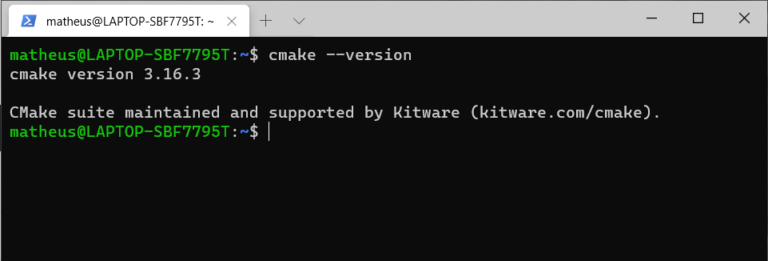

- #Run cmake linux how to
- #Run cmake linux install
- #Run cmake linux 64 Bit
- #Run cmake linux archive
- #Run cmake linux code
Make sure in the generated CMakeCache.txt, GUI is set to TRUE, open CMakeCache. Run the configuration (you need to have gcc and g++ 4.7 or higher
#Run cmake linux install
$ sudo apt install libqt4-dev qt4-dev-tools libncurses5-dev If you want cmake-gui, you will need qt4 libs an ncurses To this cmake_options="-DCMAKE_BOOTSTRAP=1 -DCMAKE_USE_OPENSSL=ON" If it needs to download extra files $ sudo apt install openssl libssl-devĮdit the bootstrap file and change the line: Install openssl to allow CMAKE have access to ssl protected websites Go to this folder: $ cd /opt/dev-tools-sources/cmake-3.5.2 You should have now a folder like this: /opt/dev-tools-sources/cmake-3.5.2
#Run cmake linux archive
Unzip it there, using GUI archive manager or $ tar -zxvf cmake-3.5.2.tar.gz
#Run cmake linux 64 Bit
More specifically for Ubuntu 14.04 or higher, 64 bit get:ĭownload it to the following directory (or any directory you like!): I finally found this that got it working: If you're building the latest from source, this is a lot harder than anyone else here suggests. Note: cmake-gui is based on Qt so you must have Qt installed if you want to build it. To add as a target, the following variable must be set: BUILD_QtDialogĮg. I built my cmake from source and by default, cmake-gui does not get built. It is installed in the same place as cmake, which on my machine is: /usr/local/bin/cmake-gui Under linux it comes with the default installation from the cmake website (at least for version 3.5.1) Note: if the build process fails in some way, just check the error message and work with it! There are too many pre-requisites and variables, attempting to detail them all would make the post tl dr and would be out of date before being submitted (see one of the other posts for an example of this).

Hey presto! cmake-gui is now present in the bin directory along with the other tools.
#Run cmake linux code
With GoogleTest declared as a dependency, you can use GoogleTest code withinĪs an example, create a file named hello_ in your my_project
#Run cmake linux how to
Hash often to point to the latest version.įor more information about how to create CMakeLists.txt files, see the The Git commit hash of the GoogleTest version to use we recommend updating the The above configuration declares a dependency on GoogleTest which is downloadedįrom GitHub.

) # For Windows: Prevent overriding the parent project's compiler/linker settings set (gtest_force_shared_crt ON CACHE BOOL "" FORCE ) FetchContent_MakeAvailable (googletest ) You’ll use this file to set up your project and declare a dependency onįirst, create a directory for your project:Ĭmake_minimum_required (VERSION 3.14 ) project (my_project ) # GoogleTest requires at least C++14 set (CMAKE_CXX_STANDARD 14 ) include (FetchContent ) FetchContent_Declare ( Set up a projectĬMake uses a file named CMakeLists.txt to configure the build system for a This will be written to CMakeLists.txt and a few initial source files. Open the Command Palette (P (Windows, Linux Ctrl+Shift+P)) and run the CMake: Quick Start command: Enter a project name. Note: The terminal commands in this tutorial show a Unix shell prompt, but theĬommands work on the Windows command line as well. The CMake Tools extension can create the files for a basic CMake project for you. If you don’t already have CMake installed, see the See Supported Platforms for more information about platforms


 0 kommentar(er)
0 kommentar(er)
